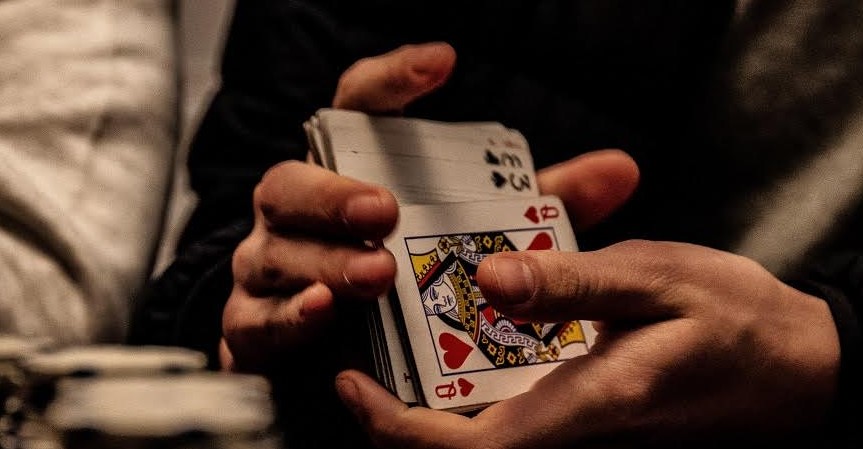They are the two most played poker variants worldwide and, although they share many aspects of their game dynamics, they have profound differences that make any abrupt change of style can affect even the most experienced player.
That’s why knowing the premises of each style of play before making the leap is so important. And keep in mind that many professional players who have adapted to Texas Hold’em have found themselves on the wrong side of the fence when they first started playing Omaha poker, and vice versa. When the mind works as a whole and has completely adapted to the environment, it is difficult to offer new challenges.
Omaha vs Hold’em: basic differences

Texas Hold’em and Omaha are like night and day. The way they approach winning in each case is so different that it forces the player to adapt to the new style of play if he has been accustomed to playing a specific game mode for a long time.
In both game variants there are several streets, the game developing in a succession of rounds: preflop, flop, turn and river.
But the differences are more numerous. Broadly speaking, the main differences between Omaha and Texas Hold’em poker are the following:
- In each style of play the distribution of cards changes. In Texas Hold’em, players receive two cards each preflop, while in Omaha poker they receive four. The more cards, the easier it is to form hands.
- Texas Hold’em vs Omaha in hand formation. In American poker, community cards may or may not be used to form the hand. In Omaha there is a pre-established distribution that forces players to use a specific number of their own cards (2 of the 4) and community cards (3 of the 5).
- The combinations change. In Hold’em poker, it is possible to form up to 1,326 combinations with the two-hole cards. On the other hand, when four cards are dealt per player, in Omaha the combinations amount to 270,725.
How to play Texas Hold’em

After each player has received his two own cards, Texas Hold’em continues with the role of the dealer, who deals three community cards on the table. This is the flop. When they are shown, a round of betting opens. The turn and river follow, with an additional community card added at the beginning of each street.
Right after each player’s initial two cards are dealt, preflop betting opens. It is normal that in the preflop everyone plays, and as the community cards are shown, those who do not see their game clearly will drop out of the hand.
This is, roughly speaking, the dynamic of Texas Hold’em poker games. The objective is simple: use any combination of your own cards and the community cards to form the best hand. The highest hand wins.
When the last round, the river, is over, the showdown arrives. In the final showdown, the players who have bet all the way down must show their cards. Whoever has managed to form the highest card combination according to the Texas Hold’em ranking wins.
In the event of a tie, the pot is divided equally between the players who have matched the best hand.
The moves that can be made during a Hold’em game are:
- Check. Pass the turn. If it is our turn and no one has bet, we can decide not to take any action. This allows us to stay in the hand without having bet anything. If an opponent bets, we can decide whether to fold, call or raise.
- Fold. Withdraw from the hand. If you see that the cards are not going to be of much help to make your project a reality, the best thing to do is to withdraw from the hand. It is estimated that good players only play 1 out of 10 hands.
- Bet. Bet. The action of betting and placing chips on the table.
- Call. Call the bet. When we are playing and we want to match the bet of the opponent who has spoken before us, we call. This is interpreted as wanting to stay in the game, and without fear of betting less than the opponent.
- Raise. Raise the bet. If you want to increase the bet, raise. When you raise, the players in the hand can fold, call or raise. If they raise again, it is a re-raise.
How to play Pot Limit Omaha and other Omaha poker games

The strategy will depend on whether you are playing Pot Limit Omaha, No Limit Omaha or a fixed limit Omaha poker game. The essential thing to understand is that Omaha poker is played with four-hole cards, and that you can choose which two of them will be part of your hand, along with three of the five community cards that will be dealt. In PLO, the pot will be the limit of your bets.
Omaha poker games share with Texas Hold’em the streets and the moves you can make in your turns, so everything we have told you a few lines above regarding that you can reuse and apply it to Omaha poker games.
A peculiarity of Omaha poker is the tendency to form split pots. Since the hand combinations are larger than in the Texas variant, it is more plausible that there are ties and, therefore, that the pot ends up being split.








